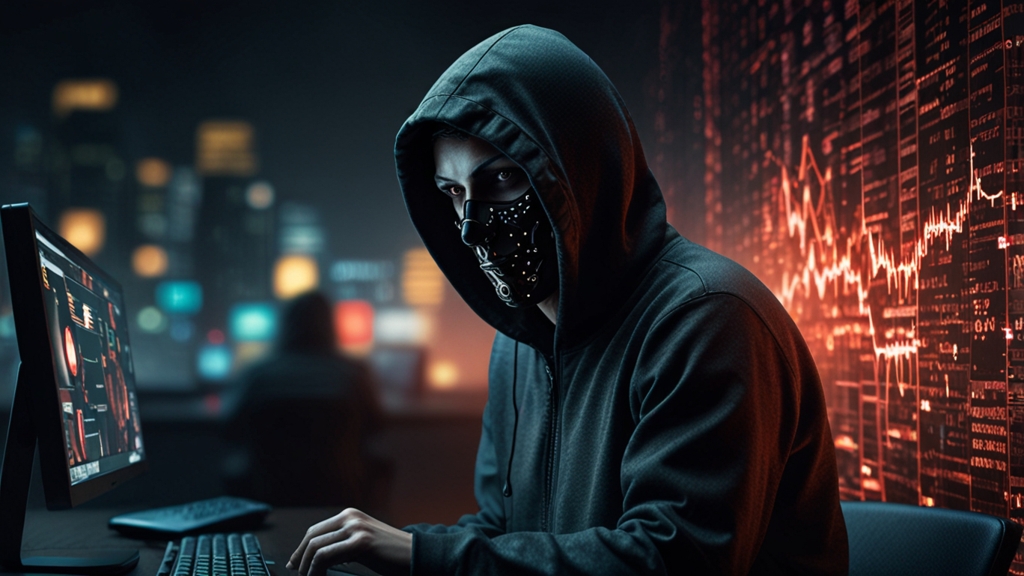Hackers are Getting Smarter: Are You Prepared for the Next Attack?
The digital landscape is continuously evolving. As technology advances, so do the techniques employed by hackers. Cyberattacks are becoming more sophisticated, and it is imperative for individuals and organizations to stay ahead of these malicious activities. Are you prepared for the next attack? This article will delve into the current threat landscape and provide insights into how you can bolster your defenses.
The Evolving Cyber Threat Landscape
In recent years, cyberattacks have increased both in frequency and complexity. Hackers are no longer just lone wolves operating from a basement; many are part of organized crime syndicates or even state-sponsored groups. These attackers are well-funded, highly skilled, and constantly refining their techniques.
From phishing attempts to ransomware, and from DDoS attacks to zero-day vulnerabilities, the array of threats is vast. One of the alarming trends is the use of artificial intelligence (AI) and machine learning by hackers to automate and enhance their attacks, making them more effective and harder to detect.
Advanced Persistent Threats (APTs)
An Advanced Persistent Threat (APT) is a prolonged and targeted cyberattack in which an intruder gains access to a network and remains undetected for an extended period. APTs are typically focused on stealing data rather than causing damage to the network or organization. The intruders behind APTs are often well-organized, highly skilled, and possess substantial financial resources.
"Organizations must understand that the sophistication of these attacks necessitates a more proactive and layered approach to cybersecurity," advises Jane Smith, a cybersecurity expert. "Merely relying on traditional defenses like firewalls and antivirus software is no longer sufficient."
Insider Threats
While much focus is placed on defending against external attackers, insider threats are equally dangerous. Employees, whether acting maliciously or negligently, can compromise an organization’s security. Insider threats can be particularly challenging to detect because they often involve individuals who have legitimate access to the organization’s systems and data.
Building Robust Defenses
1. Conduct Regular Security Training
Human error is a significant factor in many security breaches. Regular security training can help employees recognize and avoid threats such as phishing and social engineering attacks. Awareness is one of the first lines of defense against sophisticated attacks.
2. Implement Multi-Factor Authentication (MFA)
Passwords alone are not enough to protect sensitive information. Multi-Factor Authentication (MFA) adds an extra layer of security by requiring additional forms of verification, such as a fingerprint scan or a one-time code sent to a mobile device. This makes it significantly more challenging for attackers to gain unauthorized access.
3. Use Zero Trust Architecture
The Zero Trust model assumes that threats can come from both outside and inside the network. Therefore, it employs strict identity verification for anyone and anything trying to access resources on the network. Implementing a Zero Trust architecture can limit potential damage by ensuring that only authenticated and authorized users can access certain data and systems.
4. Keep Systems and Software Up-to-Date
Regularly updating systems and applications is crucial for defending against vulnerabilities that hackers could exploit. Applying patches and updates as soon as they are released can prevent attackers from using known vulnerabilities to compromise your systems.
"Organizations need to adopt a mindset of continuous improvement and vigilance," states John Doe, Chief Information Security Officer at TechCorp. "Cybersecurity is not a one-time fix but an ongoing process."
5. Regularly Backup Data
Data backups are crucial for recovering from ransomware and other destructive attacks. Ensure that backups are conducted regularly and stored securely, and test them periodically to verify their effectiveness.
Conclusion
In conclusion, the sophistication of modern cyberattacks requires a proactive and comprehensive approach to cybersecurity. Staying informed about the latest threats, investing in advanced security measures, and fostering a culture of security awareness can significantly mitigate the risk of falling victim to the next cyberattack. Remember, it's not a matter of if, but when a cyberattack will occur. Preparation and vigilance are your best defenses.






